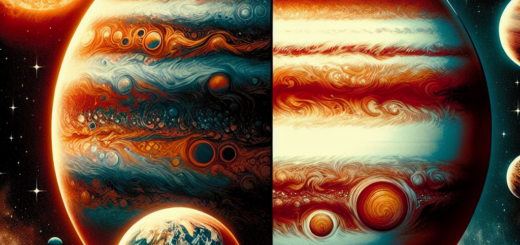How Planetary Systems Form and Evolve in the Universe
Planetary systems are a common phenomenon in the universe, with countless stars hosting planets and other celestial bodies orbiting around them. But how do these planetary systems form and evolve over time? Scientists have been studying this question for decades, using a combination of observations, computer simulations, and theoretical models to piece together the puzzle of planetary system formation.
The formation of planetary systems begins with the collapse of a giant molecular cloud, a vast cloud of gas and dust that is the birthplace of stars. As the cloud collapses under its own gravity, it begins to spin and flatten out into a disk-like structure known as a protoplanetary disk. Within this disk, dense clumps of material begin to accumulate, eventually forming planetesimals – small, rocky bodies that are the building blocks of planets.
As these planetesimals collide and merge together, they grow in size, eventually forming protoplanets – larger bodies that will go on to become planets. The process of planet formation is a chaotic and violent one, with collisions and impacts shaping the evolution of the planetary system. Some protoplanets may be ejected from the system, while others may merge together to form larger planets.
Once the planets have formed, they begin to interact with each other and with their parent star, shaping the evolution of the planetary system. Tidal forces from the star can cause the orbits of the planets to change over time, leading to complex dynamics within the system. Planets may also migrate inward or outward from their original orbits, a process known as planetary migration.
Over time, planetary systems can undergo significant changes as they evolve. Some planets may be engulfed by their parent star, while others may be ejected from the system entirely. Collisions between planets or other celestial bodies can also disrupt the system, leading to the formation of new planets or the destruction of existing ones.
In recent years, astronomers have made significant advances in our understanding of planetary system formation and evolution. The discovery of exoplanets – planets orbiting stars outside our solar system – has provided new insights into the diversity of planetary systems in the universe. By studying these exoplanets and their host stars, scientists are able to learn more about the processes that govern the formation and evolution of planetary systems.
In conclusion, planetary systems are complex and dynamic entities that are constantly evolving over time. By studying the formation and evolution of planetary systems, scientists are able to gain a deeper understanding of the processes that shape the universe and the myriad of celestial bodies that inhabit it. As technology and observational techniques continue to improve, we can look forward to even more exciting discoveries in the field of planetary system formation and evolution.













